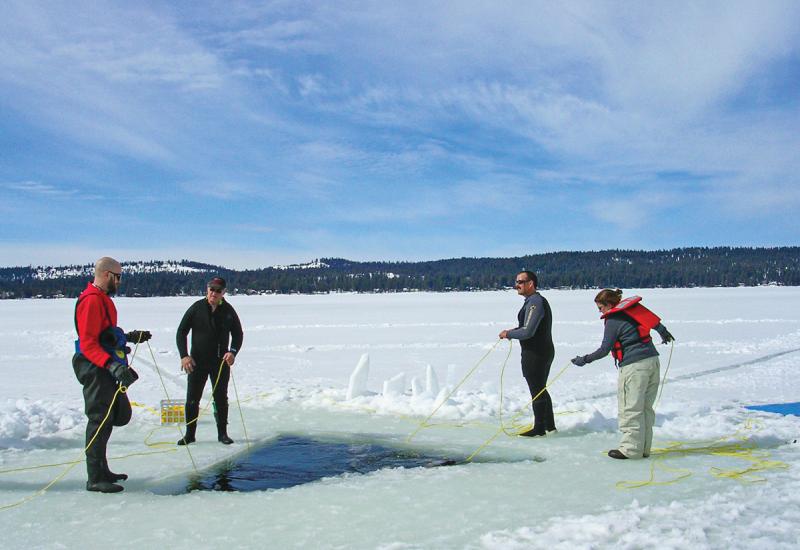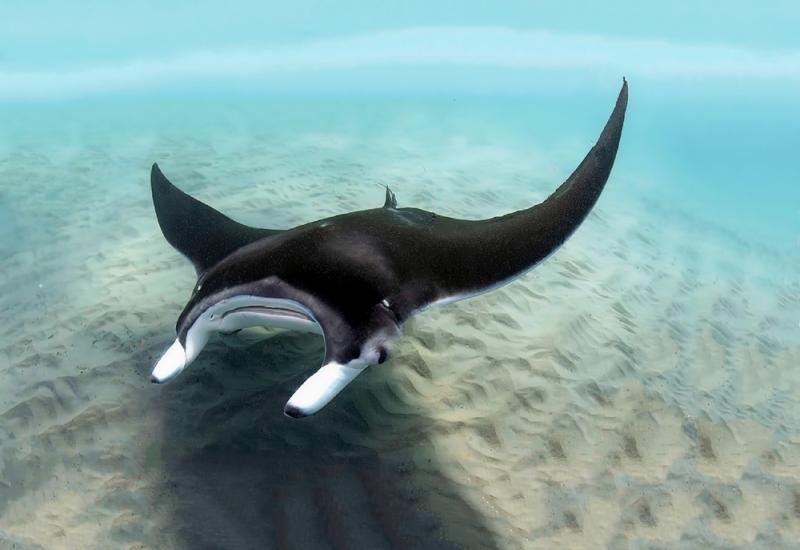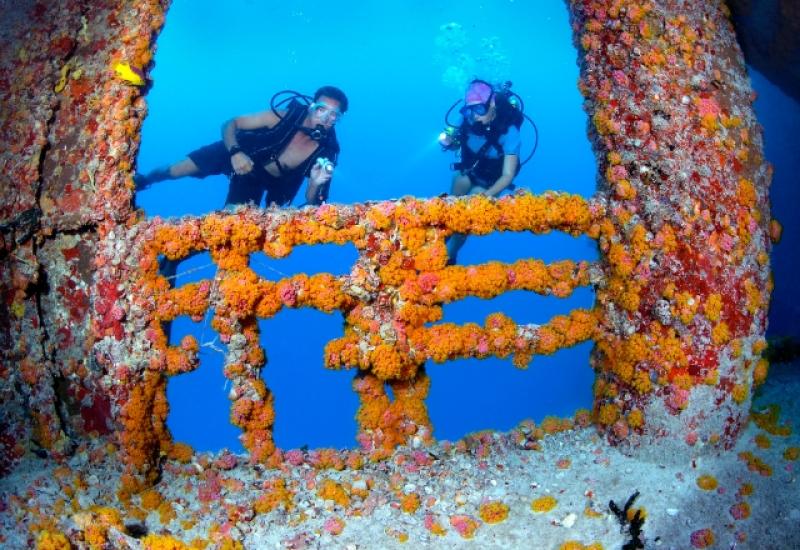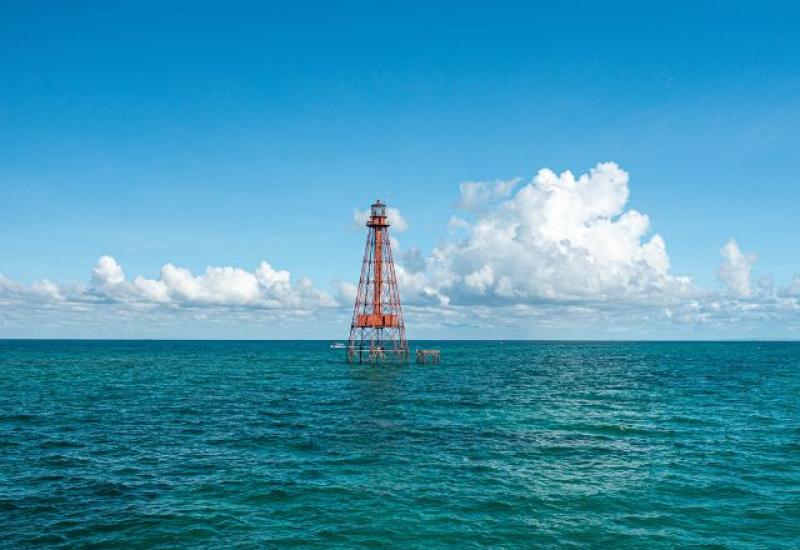Scuba Diving The Pacific Northwest
Few Seattleites bother with the drive to this particular road’s end. Standing atop Slack Tide’s stern, poised in giant-stride anticipation, we’re rather smug, knowing we’re unlikely to bump into another diver between here and Japan. We needn’t share any of what waits below.
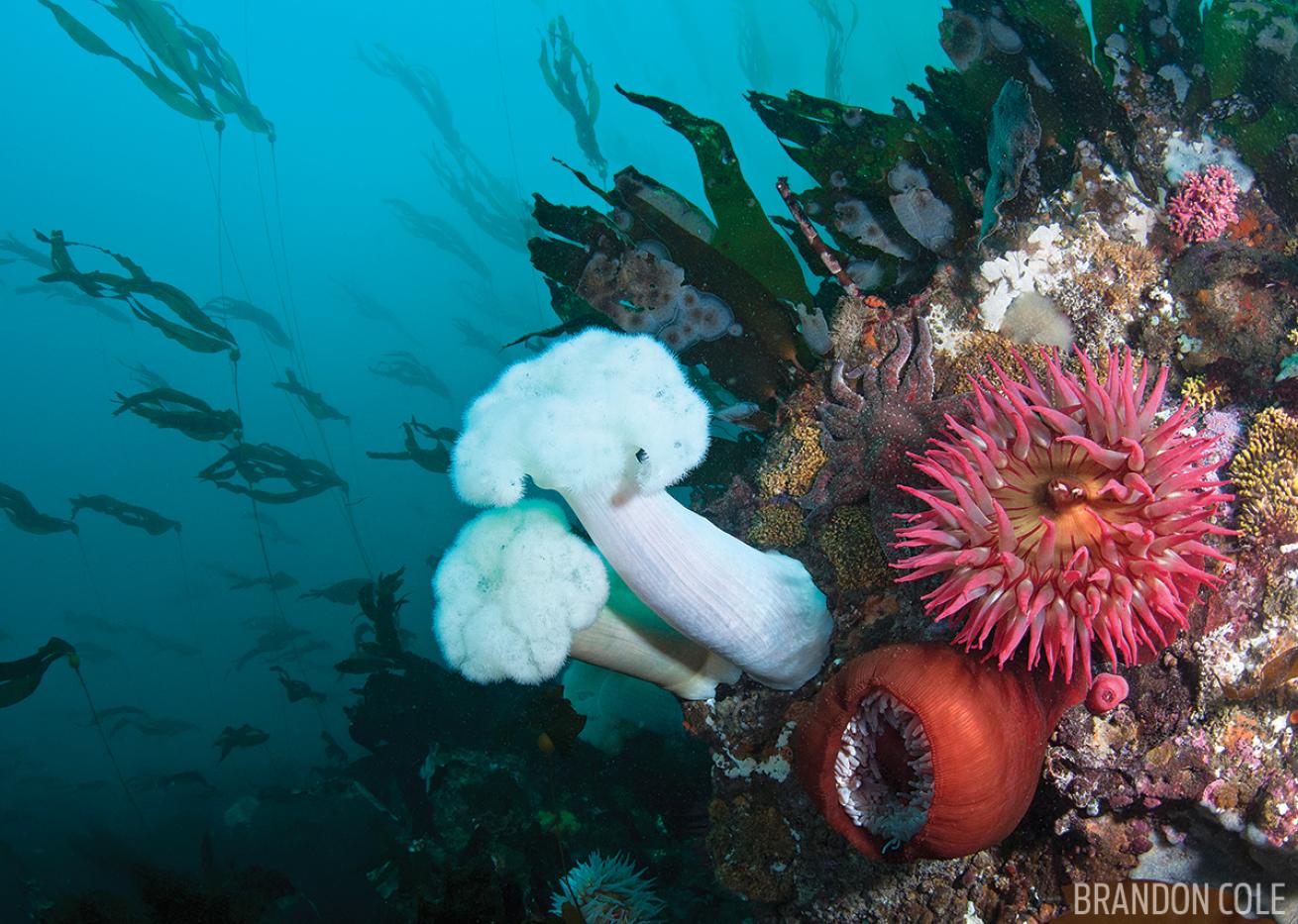
Brandon ColeFish-eating and giant plumose anemones.
Here, by the way, is Cape Flattery, the northwesternmost point in the Lower 48, where winding, picturesque Highway 112 peters out and the mighty Pacific Ocean begins. We’re just under 160 miles from the crush of Seattle, but it might as well be light-years. Skyscrapers have been replaced by soaring evergreen trees and kelp forests. Traffic jams involve rockfish and reef life. On Washington’s Olympic Peninsula, the shimmering riches are submerged.
Beneath the carved cliffs of Tatoosh Island, we descend to find ruby-red strawberry anemones and luminous ivory Metridiums decorating boulders and mini walls. Greenlings and perch glide through golden kelp fronds. Opalescent nudibranchs, and alabaster too, dine on hydroids and bryozoans. An inquisitive copper rockfish looks over my shoulder while I photograph a rainbow sea star in hot pursuit of a limpet. This is all so worth the drive.
Things move into high gear at Steller Rock, named for the mob of Steller sea lions lying in a disorderly heap just above the waterline. They seem quite content, snorting, scratching and basking in the midmorning fog. Subaquatic, we putter around for 10 minutes in a craggy valley 50 feet down, spying rockfish and red Irish lords among pink hydrocoral and orange finger sponges, abundant anemones and tunicates galore. Then we’re discovered by the gang of sea lions. It takes them a bit to get with the program, but then they bomb down repeatedly to say hello. Some are polite and reserved, watching us from the edge of visibility. Others spiral and loop about, gracefully showing off in a manner at odds with their ungainly appearance above. A few fearless, rambunctious individuals rocket straight toward us faster than my camera can focus, hundreds of pounds of wide-eyed, whiskered maniac veering away at the last moment in a torrent of bubbles and flipper wash. Only our dwindling gas supplies pull us away from the playful pinnipeds and this stellar site.
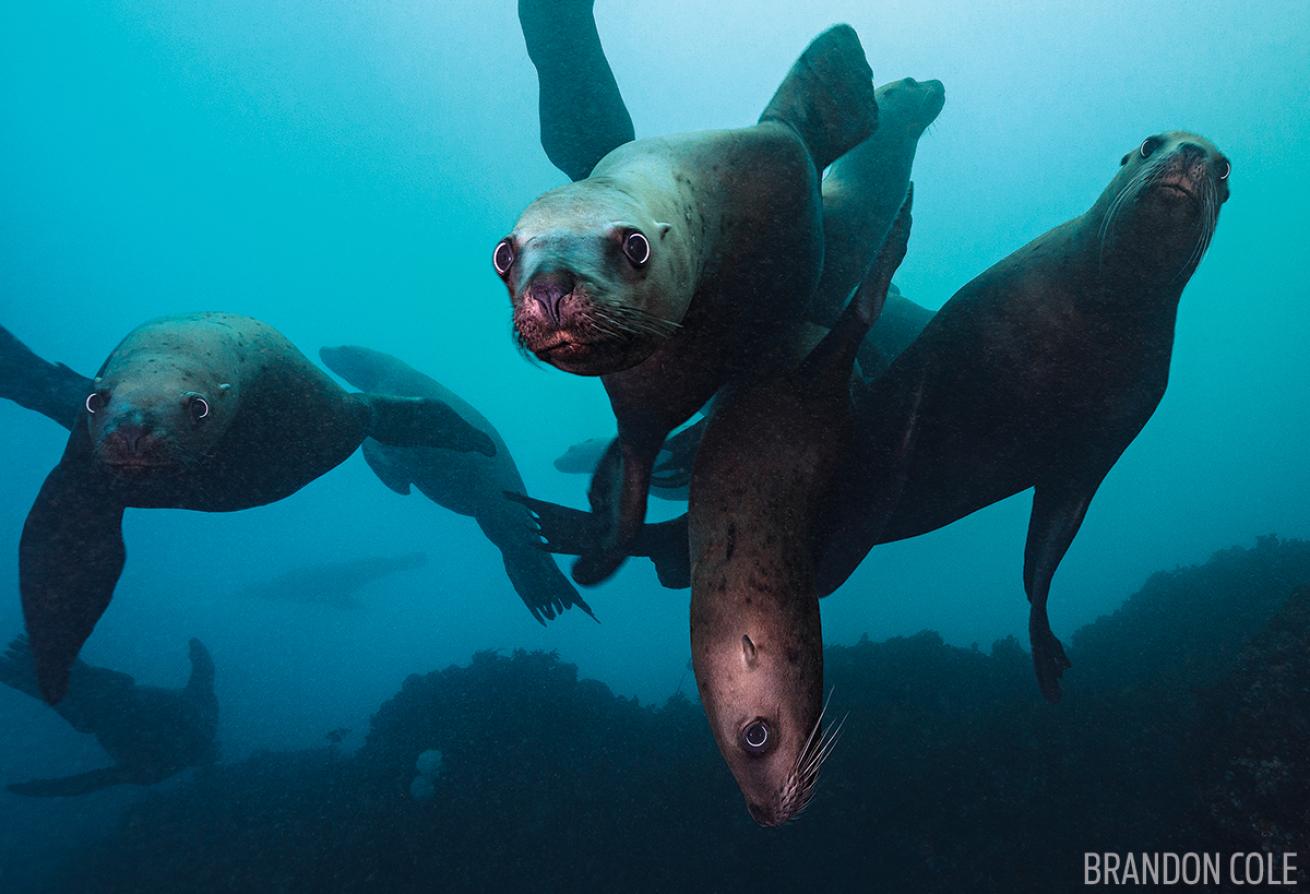
Brandon ColeAmused Steller sea lions.
Back aboard Slack Tide, leisurely motoring east along the rugged headland, we recount our crazy-fun encounter and ask the captain if our experience was typical. Northwest Dive Charters owner Bill Minton, who has more than 20 years of experience diving the area, says our luck was not unusual. “In nature there are no guarantees, of course, but the ‘dogs’ here are often curious and mischievous.”
DIVING THE FINGERS
Neah Bay is our headquarters for accessing the dozen-plus scuba sites off Cape Flattery and in the western Strait of Juan de Fuca. A hardscrabble
fishing town on the Makah Indian Reservation, its population swells to more than 1,000 during salmon and halibut season. Amenities and nightlife are limited, but the locals are friendly, and we’re here to dive, not disco.
The next day dawns foggy. With swell and wind forecast, we brainstorm options inside the strait. Minton recommends Waadah Fingers, and in no time we’re on-site. Below are parallel rocky ridges on a sloping bottom from 25 to 80 feet deep. Glacial gouging eons back and powerful currents ever since have formed these “fingers.” Waadah, like the majority of sites in the area, is prone to strong and sometimes unpredictable currents. This can be a rigorous dive. We’re a bit early yet — the kelp is still under the surface, angled over with blades streaming — so we gear up slowly and strategize.
Fortunately, kelp eventually buoys to the surface, the Strait stops racing, and we enjoy an amazing dive canyon-hopping between the fingers. Invertebrate tapestries hanging on tilted rock walls showcase a splendid array of colorful sea anemones, clumps of raspberry soft corals, and many sea star species. Little sculpins scoot over the resplendent real estate. Big cabezon move not at all, holding their poses to conserve energy. The rockfish diversity here rocks: black, quillback, canary, copper, china — and even a tiger. Elevating the menagerie to epic status are a giant Pacific octopus and a wolf eel, slack-jawed but still charismatic and photo worthy. Neither Pacific Northwest celebrity proves as frisky as the dogs from yesterday, but the serpentine superstar does treat us to a slithering circuit about the reef before retreating into its den.
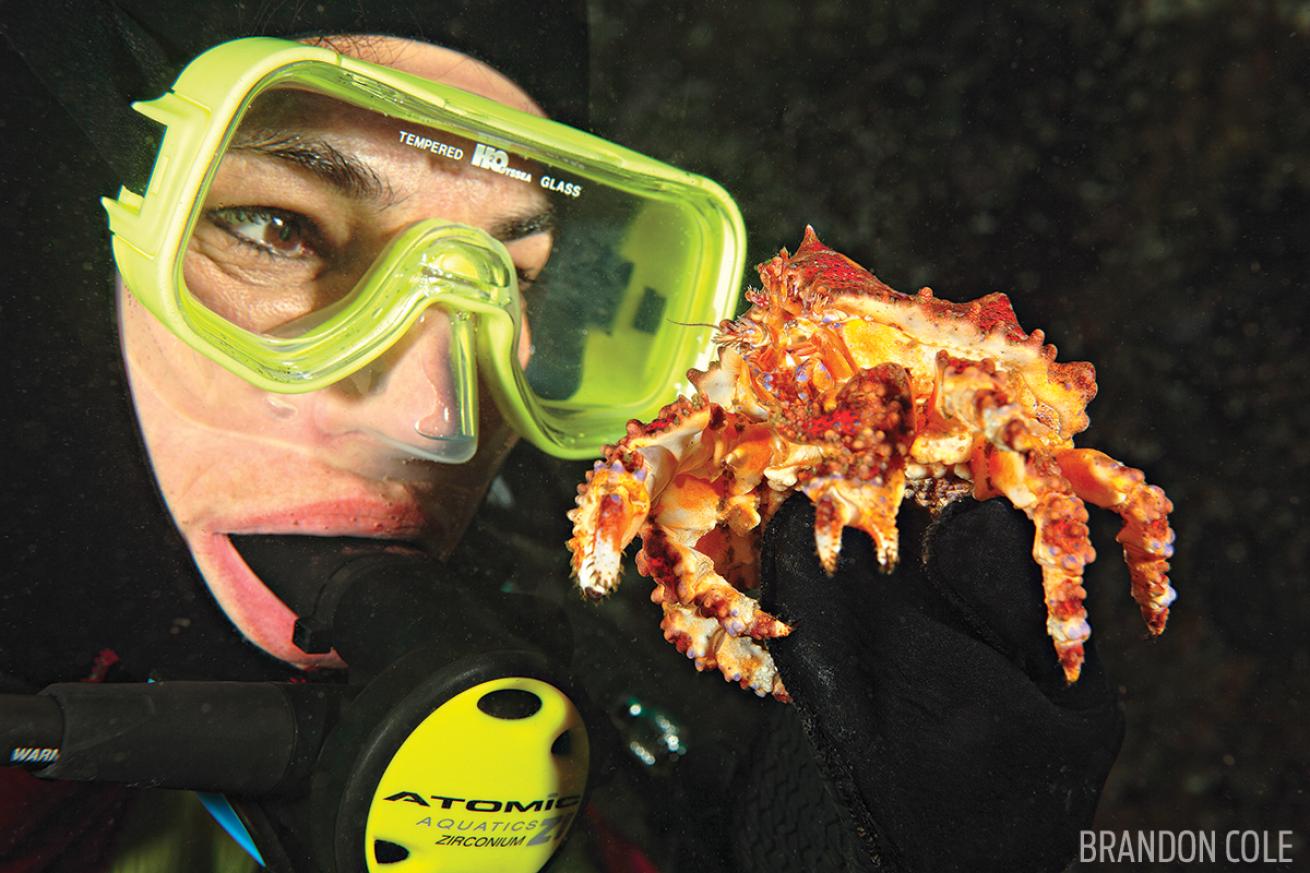
Brandon ColePugent Sound king crab.
Since the day is still young and neither wind nor swell have materialized — even the fog disappeared — we head west to dive Mushroom Rock, where we find a Puget Sound king crab and fish-eating anemones as big as pizzas. We also focus on capturing images of algal art in the sun-dappled kelp forest.
Immediately after returning to port, we jump into our truck and drive a half-hour east for a late-afternoon splash. With its easy shore entry and manifold habitats (rocky reef, kelp and sea-grass beds) in shallow water, Sekiu is perfect to rack up bottom time searching for cool critters. We find stalked jellyfish, moon snails and flatfish in the tangle of green sea grass. Then we tour an amber kelp jungle and the maze of rocks inside. At a maximum depth of just 30 feet and with plentiful photo subjects, we work up a cold sweat shooting for nearly 80 minutes in the 48-degree water. Grunt sculpins, warbonnets, heart crabs and nudis all agree to having their pictures taken. Sekiu never fails to please — except when there’s swell, which kills the viz and throws you around. Skip this site unless it’s calm, and fly a dive flag to advertise your presence to the local fishermen.
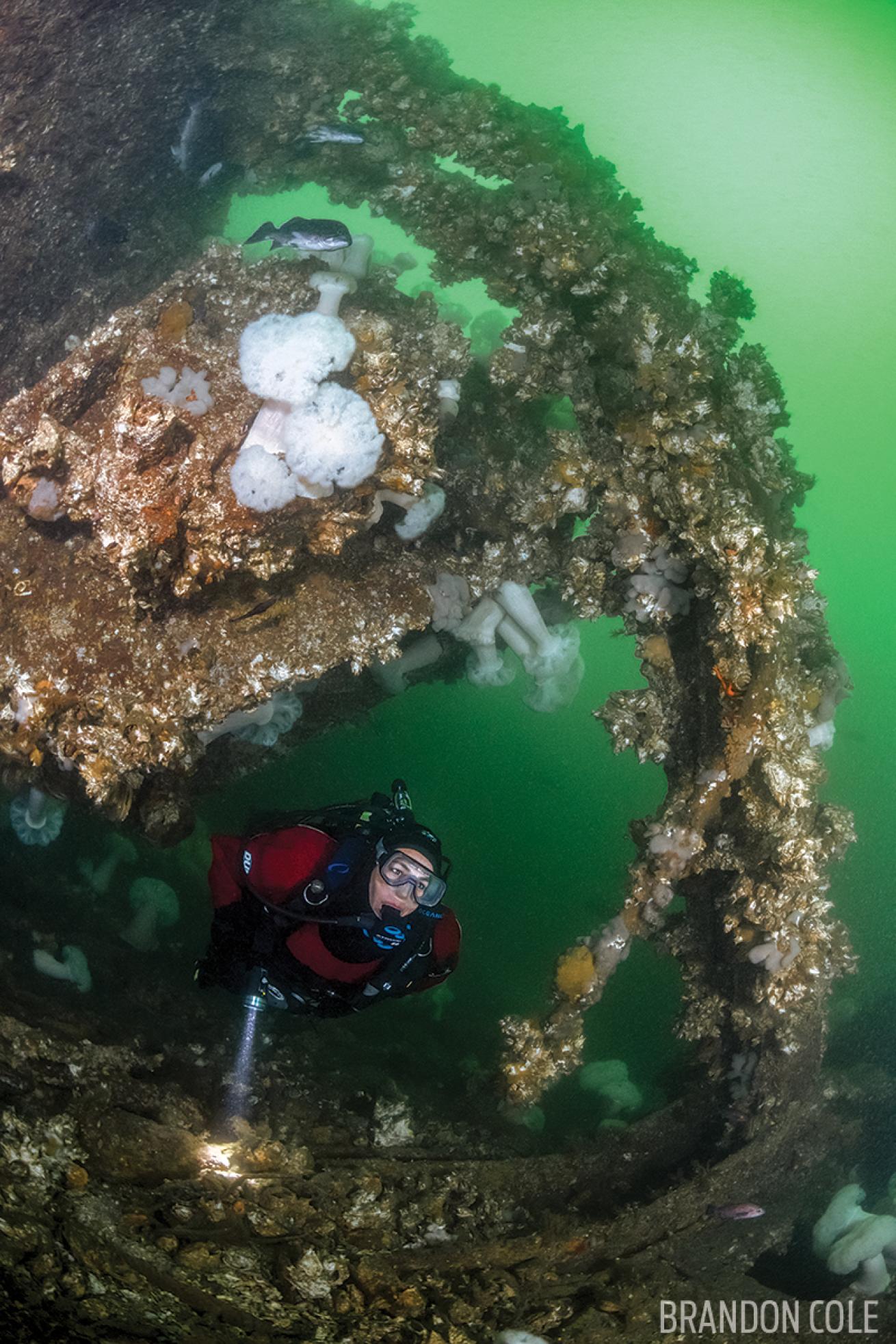
Brandon ColeThe Diamond Knot is Washington's jewel for experienced divers seeking cold-water wrecks.
DIAMOND JUBILEE
For our last day in the hinterlands, we drive 50 miles to Port Angeles to dive a legend. More people have heard of the Diamond Knot than have seen
it. Resting off Tongue Point at 135 feet, this 326-foot-long freighter sank in 1947 after colliding with another ship on a foggy night. The Knot is one
of Washington’s top sites for expert divers. Extremely strong currents stream over the wreck, visibility can be limited, and depth is a real consideration (the shallowest point is 70 feet atop the stern superstructure). Add metal hazards, deteriorating structure and risk of entanglement in fishing monofilament, and it’s clear that only properly equipped, well-trained divers should attempt the Knot, and only on a day with good conditions.
After a long hand-over-hand descent down the line, the Diamond Knot’s shadowy bulk takes shape in the emerald gloom. The ship seems to glow, wreathed in ghostly white. Time slows. It has been more than 20 years since I last was here; memories come flooding back to me. I’m so happy we made the drive from the big city.
ITINERARY
DAY ONE Emerge from your cozy cabin at Hobuck Beach Resort and drive into Neah Bay. Caffeinate at Cedar Shack Espresso, then board the boat for the day’s underwater adventure with dives at Steller Rock and Mushroom Rock. Learn about Makah tribal history and culture at the Makah Museum. Feast on amazing Indian fry bread tacos and homemade triple berry pie at Pat’s Place.
DAY TWO Time the tides for superb diving inside the Strait at Waadah Fingers and Tiger Reef. Swap dive tales on board Slack Tide while Capt. Bill barbecues brats on the back deck. Hike the Cape Flattery Trail for one of the best coastal views in the country atop storm-battered basalt bluffs. Watch the sun sink into the Pacific.
DAY THREE Enjoy a misty morning stroll along Hobuck Beach, or better yet, don a wetsuit to try your feet at surfing or stand-up paddleboarding at this family- friendly favorite known for its usually mellow break. Reposition to Sekiu for an excellent shore dive. Swap fins for hiking boots and venture into the Hoh Rainforest for tree-hugging and emerald splendor amid moss-covered spruce and hemlock.
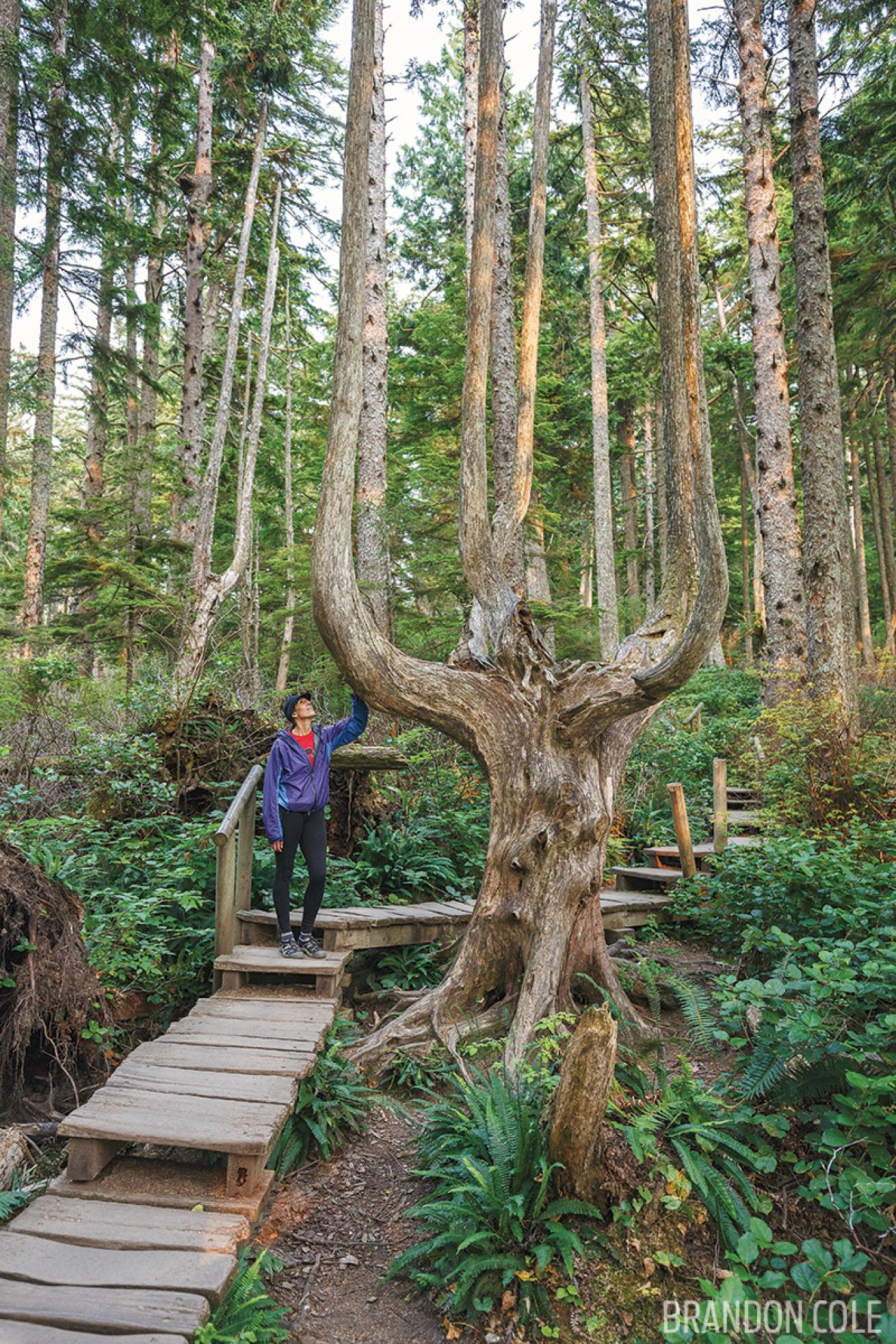
Brandon ColeHike the Cape Flattery Trail for one of the best coastal views in the country.
WHEN TO GO
The best time to dive the Olympic Peninsula is summer and early fall.
DIVE CONDITIONS
Sea temperatures range from 42 to 50 degrees F, and visibility 10 to 50 feet. Drysuits are recommended. Swell, surge, current and fog are all
facts of life out here. This can be challenging diving. Dive with experienced locals, use a live boat, plan submersions for slack water, and be wary
of boat traffic. Carry a tall SMB and reel. Audible signaling devices and submersible radios are also smart.
GETTING THERE
It takes 4.5 to 5 hours to drive to Neah Bay from Seattle, and 6.5 hours from Portland, Oregon. Make your way via US Highway 101 to Port Angeles
on the Olympic Peninsula. Continue west on 101 to the 101/112 junction, then turn right onto State Highway 112. Drive west on 112 for approximately
46 miles to Sekiu. Continue 18 additional miles until 112 ends in Neah Bay.
TIP
Get warmed up with a dive in the Port Townsend area. Should bad weather conspire to cancel diving on the Olympic Peninsula, fall back into Puget Sound, whose inland waterways are nearly always divable year-round.
OPERATORS
Northwest Dive Charters
PRICE TAG
$150 to $200 for two- and three-tank air dive charters
LEARN MORE
neahbaywa.com
makah.com
olympiccoast.noaa.gov

